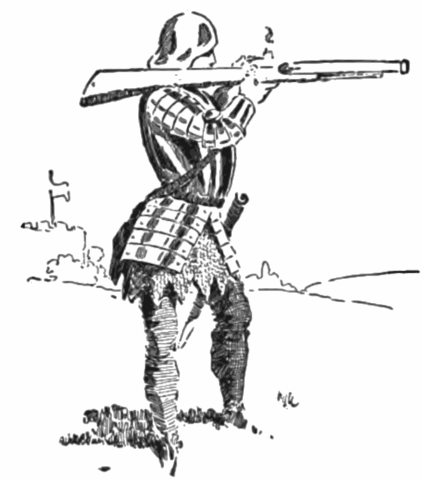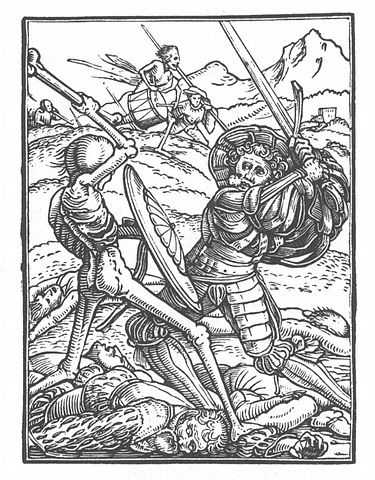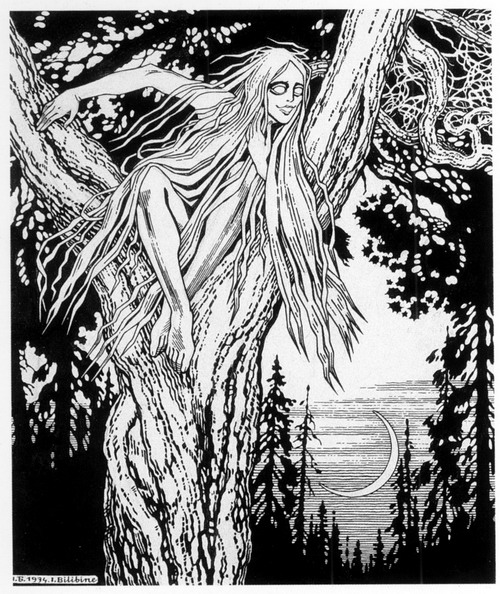This is part of
my little project to give necromancers in Vampire the Masquerade a little more utility, by giving them a number of paths for necromancy that's vaguely comparable to the number for thaumaturgy. In this case, the path in question is the Clay Path, that lets you mess around with corpses for fun and profit.
The Clay path is primarily practiced by Samedi necromancers, although it's not unknown to other necromancers. In particular, the Dunsirn family of clan Giovanni have some knowledge of the Clay path secreted away, and make good use of it in their work.
The path deals with the physical remains of the dead. Similarly to vicissitude, it allows dead flesh to be shaped and sculpted, and a skilled necromancer can produce quite impressive (if macabre) creations with this path. The path is mostly used in conjunction with the Bone path, to alter and improve the corpses to be reanimated.
The Clay path only affects inanimate, dead flesh. The bodies of vampires, the Risen, zombies or anything else that's in some way animate aren't affected by it unless the necromancer first renders them properly dead and inert.
Rank 1 ~ Preservation
This ability lets the necromancer preserve a corpse for future use. Whilst it doesn't restore the corpse to its previous state (and so is best used on relatively fresh bodies) it won't rot any further, being preserved as it is indefinitely.
System: The player rolls intelligence + occult, with the difficulty set by the age and state of decomposition of the corpse. A fresh corpse is difficulty 9, a corpse that is starting to decay but still largely intact is difficulty 7, a corpse that is severely rotted and coming apart is difficulty 5, and a skeleton is difficulty three. If successful, the corpse won't rot any further, being perfectly preserved indefinitely. Natural wear-and-tear can still be accrued, however.
This art can also be used to prevent the body of a vampire that has suffered final death from crumbling to ash. If the necromancer gets there in time, then the roll has a difficulty of 9, since the body is still more or less fresh.
Rank 2 ~ Masquery
This ability lets the necromancer alter the superficial appearance of a corpse. They can change the rough shape, size, pigmentation and other physical features of the corpse. They can even use this art to cover up signs of the cause of death (including quite dramatic injuries), or introduce clues that would fool a coroner. However, the corpse will always remain in the same basic state of decay as when the necromancer started work - the art can't reverse the process of decay.
System: To make basic alterations, the player must spend a blood point, then roll intelligence + body crafts, with a difficulty of 6. For each success, one feature of the corpse can be altered. Covering up, or creating false, signs of the cause of death instead as a difficulty of 8, and one alteration can be made per success. To duplicate another person requires a manipulation + body crafts roll, with difficulty 8, and five successes are required for a flawless copy; fewer successes leave minute, or not-so-minute flaws.
Rank 4 ~ Grotesquery
Grotesquery allows the necromancer to alter bodies in order to improve their effectiveness as servants when reanimated or possessed using Bone path necromancy. Although the changes made are startling, the corpse cannot be altered too far with this art, or else it will lose integrity and fall apart. As such, the creations produced will generally be roughly humanoid, if bizarre looking.
System: To make alterations, the player must spend a blood point, then roll dexterity + body crafts, with a difficulty of six. For each success, the necromancer may improve the body in one of the ways listed below, so that its stats are better than those of the basic zombie or possessed corpse. If Grotesquery is used another time on a corpse already altered by it (or by the rank 4 ability Artifice) it must first be reverted to its natural state (removing any improvements it had been given) or else it will lose integrity and crumble away; you can't stack multiple uses of Grotesquery on a single corpse. A corpse may be given the same improvement many times, and if it is then the effects are cumulative. The possible improvements a corpse can be given are-
Bone armour - gives the corpse a dice of armour that can be used to soak all damage.
Natural weapons - the corpse's unarmed attacks deal +1 damage and the damage they deal is lethal.
Delicate fingers - the corpse gets an extra dice to dexterity rolls involving fine manipulation.
Bulk - the corpse gets an extra health level.
Whipcord limbs - the corpse gets an extra dice to dexterity rolls involving physical agility.
Climbing hooks - the corpse gets an extra dice to rolls to climb.
Grasping appendages - the corpse gets an extra dice to rolls to grapple.
Extra sensory organs - the corpse gets an extra dice to perception rolls (zombies have perception 0 normally).
Other modifications are possible, and will probably give a bonus of a single extra dice or similar effect. More exotic modifications are possible, but their effects are down to the storyteller's discretion.
Rank 4 ~ Artifice
With this ability, the necromancer can warp their subjects flesh into strange new shapes. They can create whole new structures in the corpse, such as new limbs, mouths and organs. Further than this, they can warp the body into astonishing new shapes, creating macabre furniture and curios from the bodies of the dead. Indeed, like with vicissitude, the necromancer is limited only by their imagination as to what they can create, and many produce startlingly strange things this way.
System: To make basic alterations, the player must spend a blood point, then roll dexterity + body crafts, with a difficulty depending on the complexity of the task. A simple alteration such as sealing a mouth shut has a difficulty of 5, whilst truly complex work such as creating an ornate chandelier from a corpse would have a difficulty of eight. Only one success is required to only alter a small part of the body, such as the face, whilst five are required to alter the whole body. Creations made with artifice cannot be animated using Bone path necromancy.
Rank 5 ~ Thanotechnology
This ability is the peak of the Clay path necromancer's power. With this ability, they can create huge, shuddering machines of dead flesh and bone, suitable for reanimation. Several corpses must be fused together, in a process that takes several nights to complete.
Their flesh is intricately shaped to form the working parts of machinery, with bone and sinew in place of motors, viscera replacing coolants and pumps, and dead brain matter and nerves in place of electrical components. Though the whole thing is as grotesque and unnatural as any Tzimisce creation, a skilled necromancer can make a necromantic facsimile of almost any piece of technology, from a simple automatic door to a working supercomputer.
System: To create a piece of thanotechnology, the necromancer must use at least three corpses, likely for particularly large and involved projects. Most machines consist of around six or seven corpses. Fusing them together costs one blood point per corpse, and requires a successful intelligence + occult roll, at difficulty 6.
Once the machine's bulk is there, it then needs to be shaped into a working machine in a process similar to the power Artifice. This costs an additional two points of blood, and requires a dexterity + body crafts roll, with a difficulty depending on the complexity of the machine. A simple device, such as a printing press, has a difficulty of 6, whilst the most complex machines, such as a computer, has a difficulty of 10. In addition, the necromancer must understand how the machine they are replicating works, which may require them to have a certain number of dots in a relevant knowledge such as Technology or Computers. At least one success must be scored for each corpse that makes up part of the machine, although this can be made as an extended roll, accumulating successes over time.
Once the machine has been given shape, all that remains is to animate it. The powers Apprentice's Brooms or Shambling Hordes of Bone path necromancy will both work for this, as will the power Demonic Possession. If the thanotechnology is intended for combat use (such as a necromantic artillery piece), then the Shambling Hordes or Demonic Possession must be used to animate it. If the thanotechnology is to have any independent thoughts or will of its own, then only Demonic Possession will suffice. Once animated in this way, the machine will continue to work indefinitely, requiring no fuel or instruction, until its creator commands it to stop.




.jpg)






















